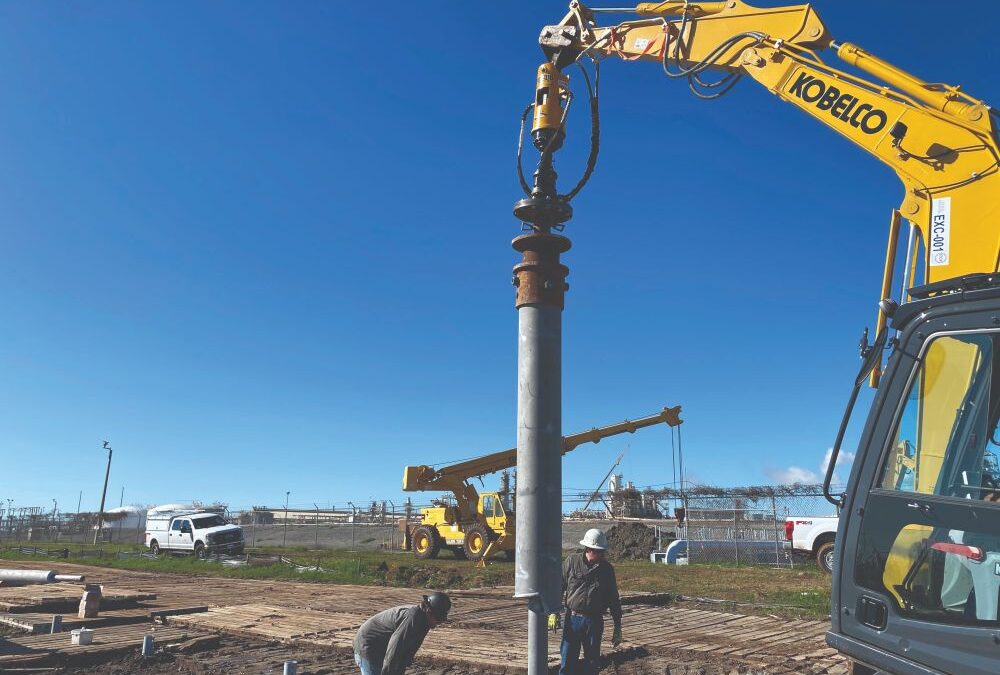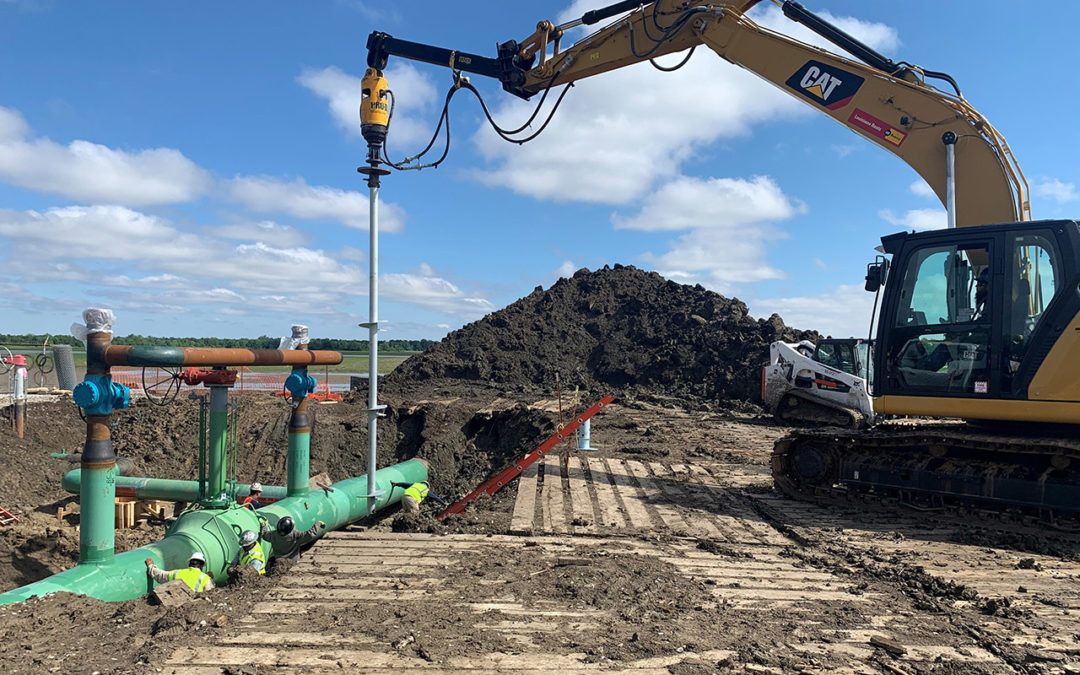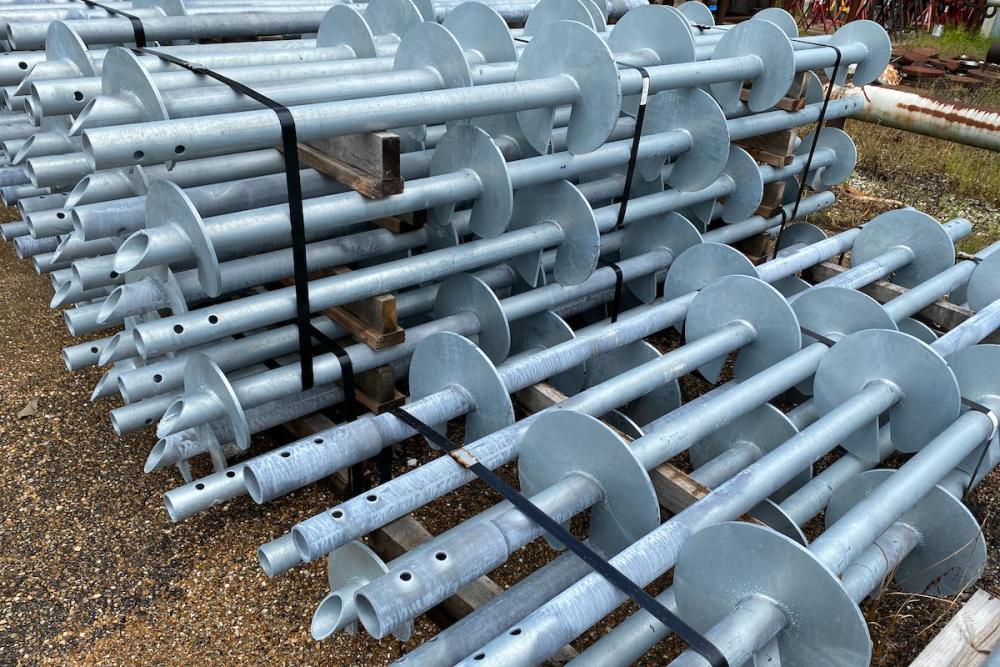
Which Is Better? Round vs. Square Shaft for Helical Pile Design
When engineering the ideal helical pile design for your foundational application, there are many important factors to consider. One of them is shape. Here’s some insight on round vs. square helical pile shafts, so you can decide which might option be best suited for your project.
Round vs. Square Helical Pile Shaft
There are two main helical pile shaft designs: round and square. Neither shape is overwhelmingly “better” than the other — it just depends on your project’s conditions and goals.
Below, we’ll list each type of helical pile design, along with its typical sizes, advantages, disadvantages, and applications.
Round-Shaft Helical Piles
Round-shaft helical piles are made of steel tubes with a circular, hollow cross-sections. They’re typically wider in diameter than most square-shaft piles. This makes round-shaft helical piles the best type of helical pile shaft for resisting lateral loads.
You can see the round shape of these helical piles from one of our recent projects:
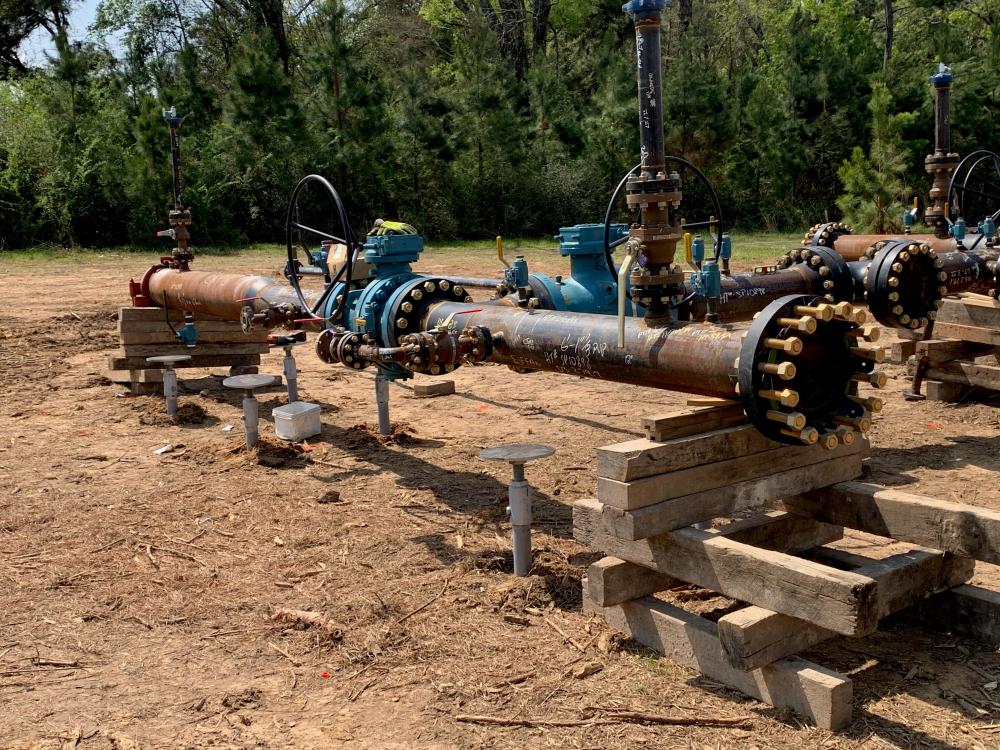
Sizes
Typical sizes for round-shaft helical piles are: 2.875”, 3.5”, 4.5”, 6”, 8”, and 10”+.
Advantages
Round-shaft helical piles bring the following advantages:
- Ideal for soft soils
- Able to support large lateral loads
- Higher installation torque rating
- Can be filled with grout for boosted structural durability
Disadvantages
Because round-shaft helical piles generally have larger diameters than square-shaft piles, they can be more difficult to insert and stabilize in very dense or rocky soils.
Suggested Applications
Round-shaft helical piles are most frequently utilized in new construction settings where high lateral loading and/or buckling are concerns.
Square-Shaft Helical Piles
Square-shaft helical piles are solid, square bars made of steel. They’re commonly smaller in diameter than round-shaft helical piles, but can still deliver a great capacity-to-torque ratio. Plus, they offer more stability and ease of installation in certain environmental conditions.
You can see the square shaft of these helical piles from one of our recent projects:
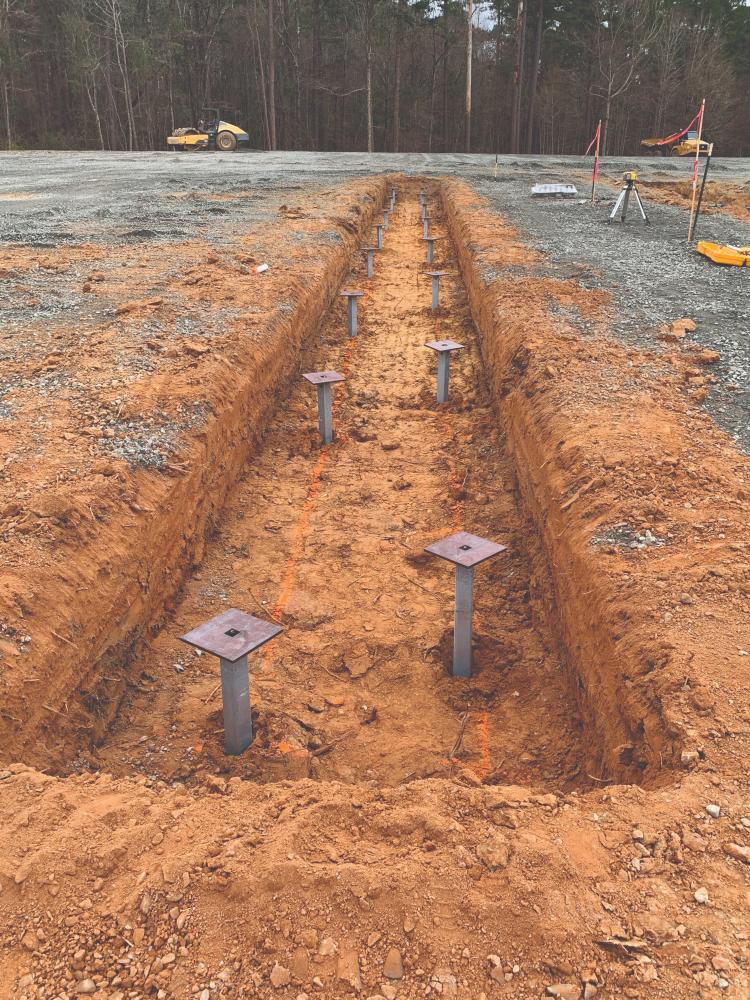
Sizes
Typical sizes for square-shaft helical piles are: 1.5”, 1.75”, 2”, and 2.25”.
Advantages
Square-shaft helical piles have their own set of advantages, including:
- Ideal for very hard, dense, or rocky soils
- Better at penetrating without causing ground damage
- Able to support large axial compressive loads
Disadvantages
Square-shaft helical piles don’t have as much lateral capacity and can’t defend as much against buckling.
Suggested Applications
Due to their unique capabilities and shortcomings, square-shaft helical piles are ideal for projects with rocky or firm soil conditions. They should be avoided in situations where high lateral loading or buckling resistance is necessary.
Combo Helical Piles
In some cases, a combo pile is best. A combo pile is a combination of a round-shaft and a square-shaft pile. It has a square-shaft lead that is followed by a series of round-shaft extensions.
Sizes
Typical sizes for combo helical piles are: 1.5”/2.875”, 1.75”/3.5”, 2.25”/4.5”.
Advantages
Combo helical piles offer the “best of both worlds” when it comes to installation and performance. Here are some of their advantages:
- Great penetrating characteristics of square-shaft piles
- Suitable for very dense or rocky soil conditions
- Large-diameter round shaft extension
- Bucking resistance
- Able to support high lateral loads
Disadvantages
Now you might be wondering, “Why wouldn’t I just always use a combo pile?” Well, it’s not always necessary and it’s always more expensive. The extra material costs make combo piles less affordable, so it’s best to only use them when they’re absolutely needed.
Suggested Applications
Combo helical piles are most often used in compression applications. This is when layers of hard soil are buried deep under softer surface soil. Think of environments like high water tables, grout-restricted sites, etc.
For Helical Pile Design & Installation Done Right, Contact Elite Helical.
To get the most out of your helical pile installation, you need to make sure you’re working with the helical pile design that best suits your application’s needs.
Need help making the right choice? Contact our experts at Elite Helical. We’ll walk you through various options, then help you install a foundational system that will last for years.
